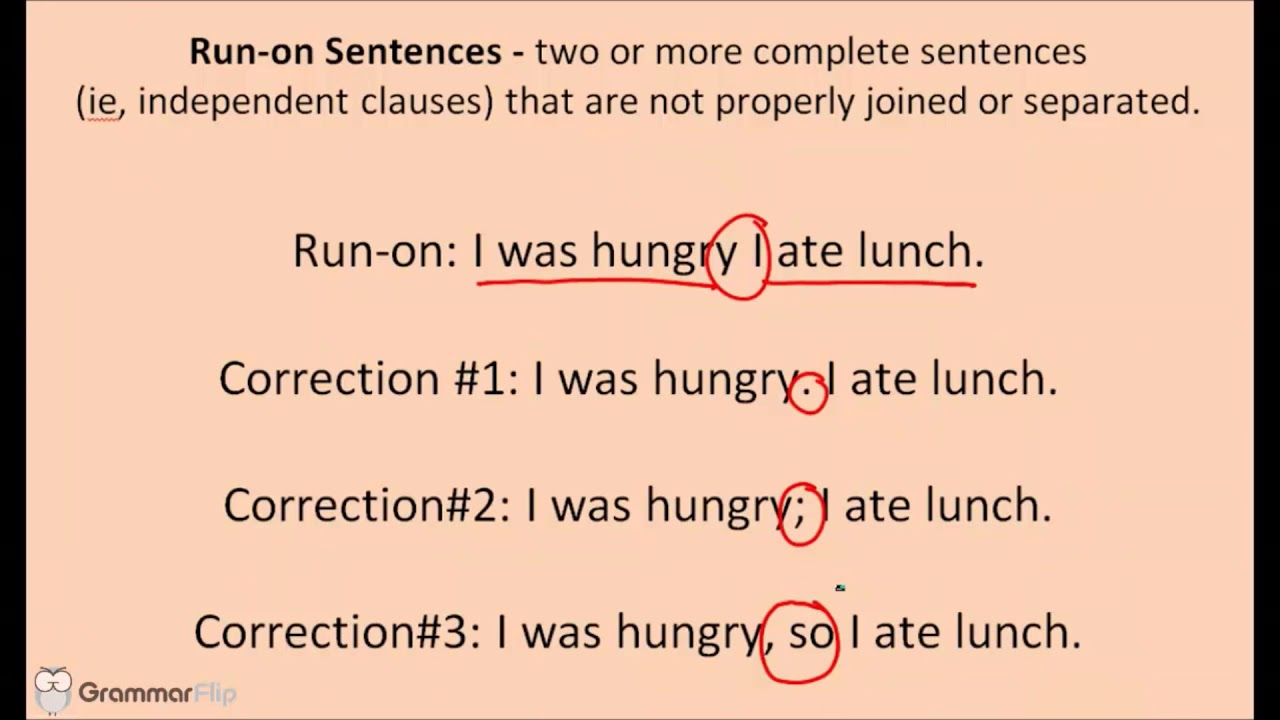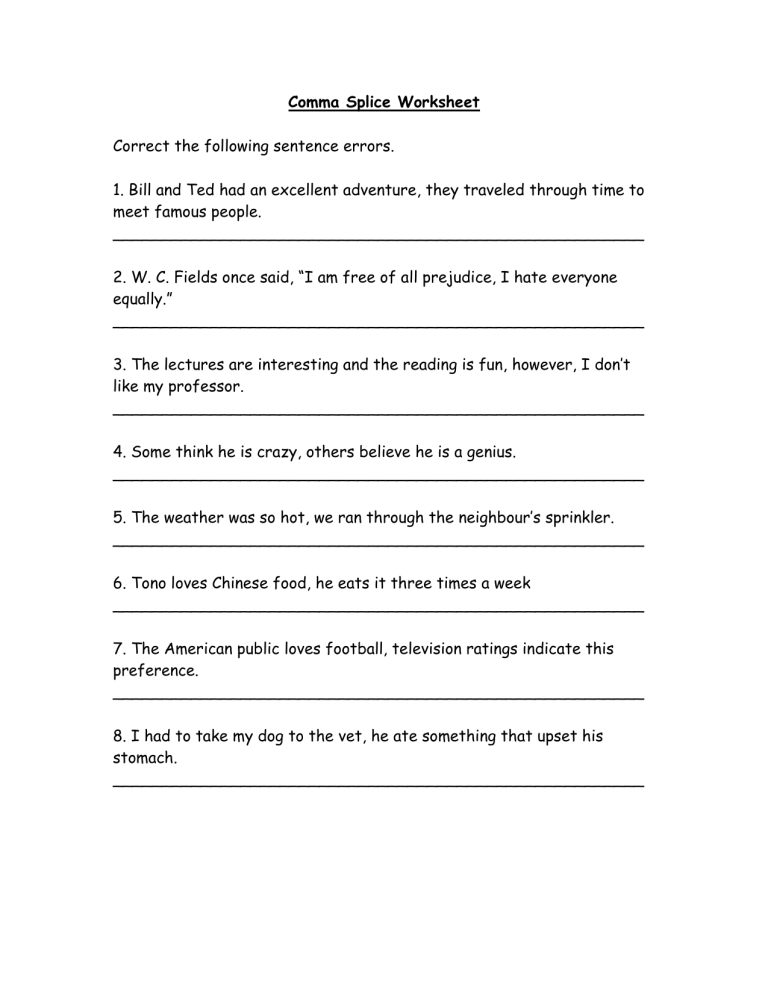Comma Splice Fixes: 5 Quick Worksheet Tips

Are you or someone you know struggling with comma splices in their writing? Fear not! This guide on comma splice fixes will help you transform your writing from good to impeccable. Understanding how to properly correct these common errors will elevate your writing skills, making your sentences clear, concise, and authoritative. Let's dive into what comma splices are and how to rectify them with some quick worksheet tips.
What Are Comma Splices?

A comma splice occurs when two independent clauses are incorrectly joined by just a comma, without the necessary conjunction or punctuation to separate them. Here's an example of a comma splice:
Emma loved hiking through the forest, she found the serenity of nature to be incredibly healing.
In this sentence, "Emma loved hiking through the forest" and "she found the serenity of nature to be incredibly healing" are both independent clauses, meaning they can stand alone as complete sentences. Connecting them with just a comma is a grammatical error.
5 Quick Worksheet Tips to Fix Comma Splices

1. Use a Conjunction

- Change the comma to a coordinating conjunction like “and,” “but,” “or,” or “so.”
- Example: Emma loved hiking through the forest, and she found the serenity of nature to be incredibly healing.
2. Add a Semicolon

- Replace the comma with a semicolon to separate the two independent clauses.
- Example: Emma loved hiking through the forest; she found the serenity of nature to be incredibly healing.
3. Create Two Separate Sentences

- Use a period to divide the two clauses into separate sentences.
- Example: Emma loved hiking through the forest. She found the serenity of nature to be incredibly healing.
4. Implement a Subordinating Conjunction

- Turn one of the independent clauses into a dependent clause by using a subordinating conjunction like “because,” “since,” or “although.”
- Example: Because Emma loved hiking through the forest, she found the serenity of nature to be incredibly healing.
5. Use a Dash for Style

- If the flow and context allow, a dash can be used for stylistic variation.
- Example: Emma loved hiking through the forest—she found the serenity of nature to be incredibly healing.
Practice with Worksheets

To reinforce your learning, here’s a simple table that you can use as a worksheet:
| Comma Splice | Corrected Sentence |
|---|---|
| John was tired, he had been working all night. | John was tired because he had been working all night. |
| The cake was delicious, I couldn't help but eat another slice. | The cake was delicious; I couldn't help but eat another slice. |
| Sally missed the bus, she had to walk to school. | Sally missed the bus. She had to walk to school. |

💡 Note: Remember, the goal is not just to fix the comma splice but to maintain the flow and meaning of the original sentence as much as possible.
In conclusion, mastering the art of fixing comma splices enhances your writing by making it clearer, more sophisticated, and easier to read. Using these worksheet tips regularly can significantly improve your grammar, leading to better communication and the ability to convey your thoughts more effectively.
What is the difference between a comma splice and a run-on sentence?

+
A comma splice occurs when two independent clauses are incorrectly joined by a comma without a conjunction. A run-on sentence, on the other hand, occurs when these clauses are joined without any punctuation at all or with just a comma without any conjunction.
Can I always use a dash to fix a comma splice?

+
While a dash can be used to fix some comma splices, it’s not always the best solution. Using dashes can add stylistic flair but should be used sparingly to avoid overuse and to maintain the clarity of your writing.
How can I remember when to use a semicolon?

+
Think of a semicolon as a “strong pause” in your sentence. It’s used to separate items in a list that already contains commas or when you want to link two closely related ideas without using a conjunction. If both sides of the semicolon can stand alone as complete sentences, a semicolon is appropriate.